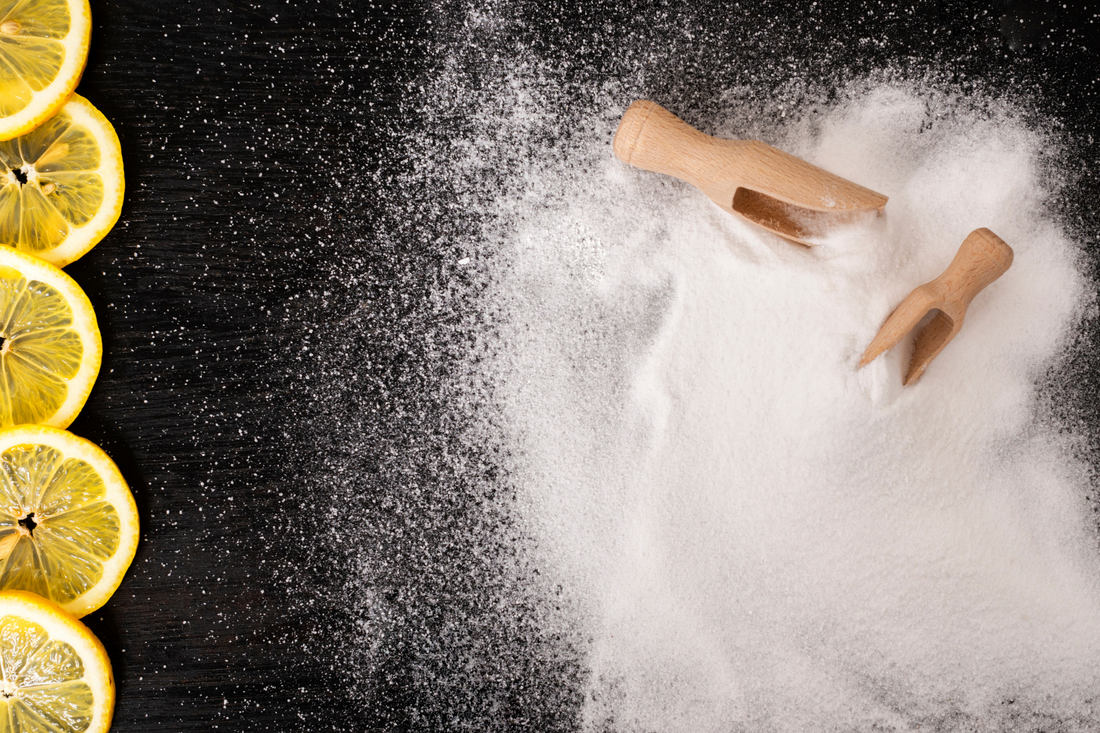Sodium benzoate is a preservative that is often used in various cosmetic and food products. In this blog, we will look into how sodium benzoate is being used in cosmetic hair products. Sodium benzoate is a white, crystalline solid and readily dissolves in water. It is the salt form of benzoic acid, which is commonly found in many plants, including tomatoes, cinnamon, plums, and apples.
What is the purpose of sodium benzoate in hair products?
In hair and other beauty products, sodium benzoate is added as an antimicrobial agent to prevent the growth of bacteria, fungi, mold, and other bugs that could ruin the product. When dissolved, sodium benzoate in hair products dissociates into benzoic acid ions, which get absorbed into the cells of any existing microorganisms that might happen to be in the water. When the formulation is sufficiently acidic (< pH 5), benzoic acid interferes with the normal function of the microorganisms, including their ability to make sugar, their primary source of food, which prevents the further growth and spread of microorganisms in the formulation.
Alternative Uses
While sodium benzoate in hair products and other beauty and cosmetic products have been used time and time again as a preservative, sodium benzoate is also a well known preservative in many food products. Especially in acidic foods, sodium benzoate serves as an effective preservative and can be found in lemon juice, jelly, soda, pickles, and salad dressing. Additionally, it is often included in coolants for car engines to prevent corrosion, and also incorporated into plastics to improve the strength of different materials. As you can see, there are many diverse applications of sodium benzoate beyond hair and beauty products!
How Safe is Sodium Benzoate?
Safety Studies and Investigations
The FDA says sodium benzoate is Generally Recognized As Safe (GRAS) in food products at concentrations below 0.1%. In 2001, the Cosmetic Ingredient Review released a report showing that sodium benzoate is safe for use in beauty and hair products at concentrations up to 5%, which is significantly higher than the level that sodium benzoate in hair products is present at. Additionally, researchers have extensively tested this ingredient in small animal toxicology studies. Tests included reproductive toxicity in a 4-generation rat study, genotoxicity tests to measure DNA damage in cells, as well as carcinogenicity tests to understand the potential cancerous effects of sodium benzoate. These studies showed that sodium benzoate was reasonably safe in the majority of settings, but demonstrated slight negative effects at very high doses, but much beyond the levels currently used in human products. As we’ve highlighted in previous blogs, too much of anything can sometimes be bad.
What you should consider when looking at sodium benzoate in hair products
When considering sodium benzoate in hair products, keep an eye out for the pH level of the formulation, manufacturing practices of the product, and the presence of Vitamin C. As we’ve outlined, the process of sodium benzoate dissociating into benzoic acid ions happems more often in solutions with lower pH (< 5 pH). Formulations that have a higher pH limit the effectiveness of sodium benzoate in hair product’s preservative properties. You should also verify that products were protected from intense light or heat exposure. Quality manufacturing processes ensure that the sodium benzoate in hair products won’t react or transform into something else that has no preservative properties or something that could be potentially harmful.
Finally, it is important to look into products that contain both sodium benzoate and Vitamin C. Sodium benzoate in hair products can react with vitamin C to produce the molecule benzene. Benzene, at high enough concentrations, can be potentially carcinogenic, or cancer-causing. It is important to consider the concentrations of all ingredients in hair products, as only formulations with sufficiently high levels of vitamin C can prevent benzene formation. These reactions also proceed differently depending on the temperature and light exposure of the products. So when it comes to sodium benzoate in hair products, it’s only there as a preservative and the scientific and clinical data show that it is safe at the concentrations typically used.




